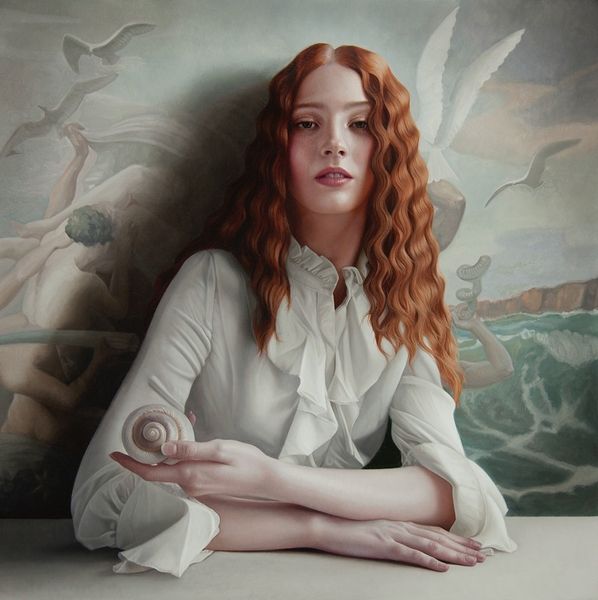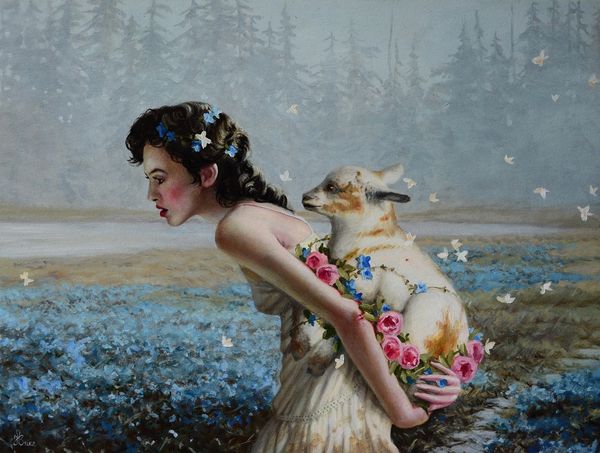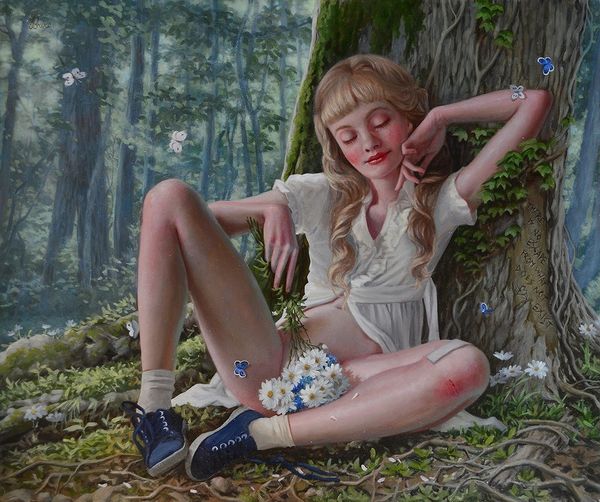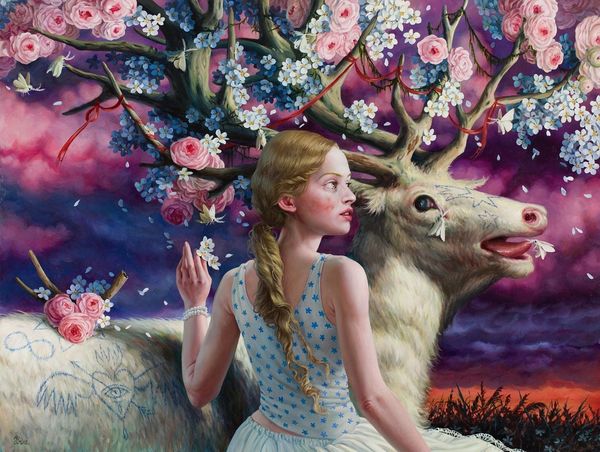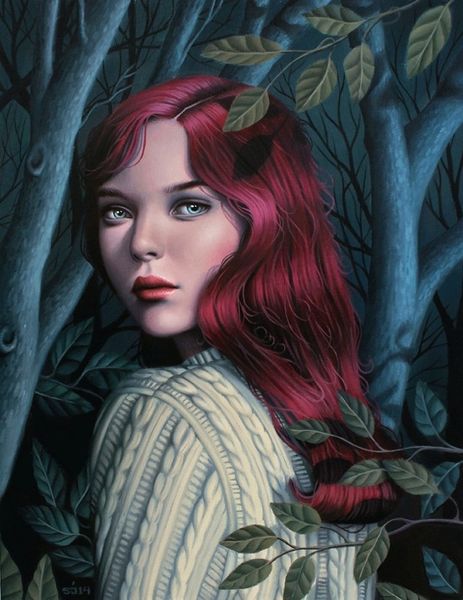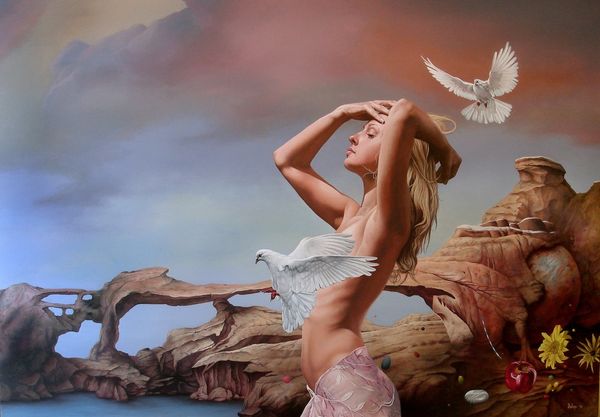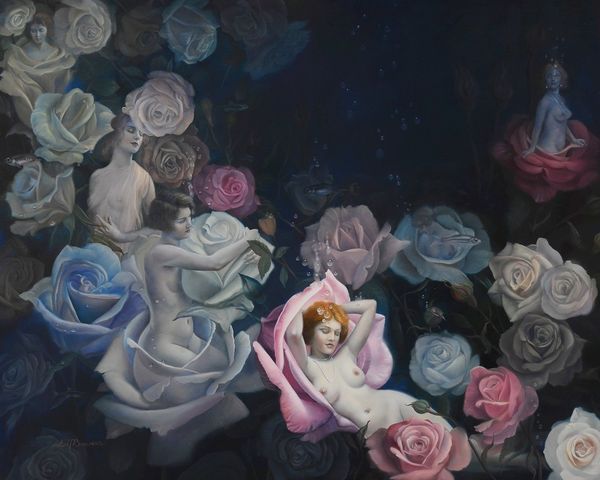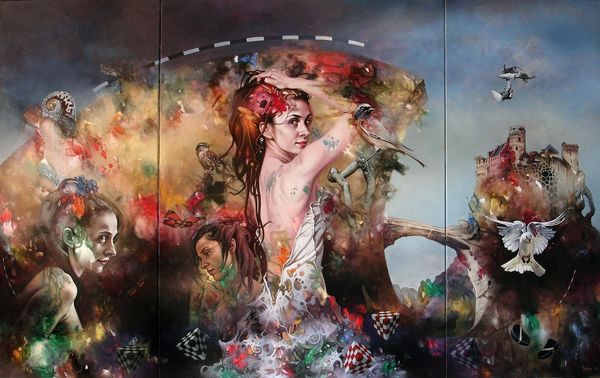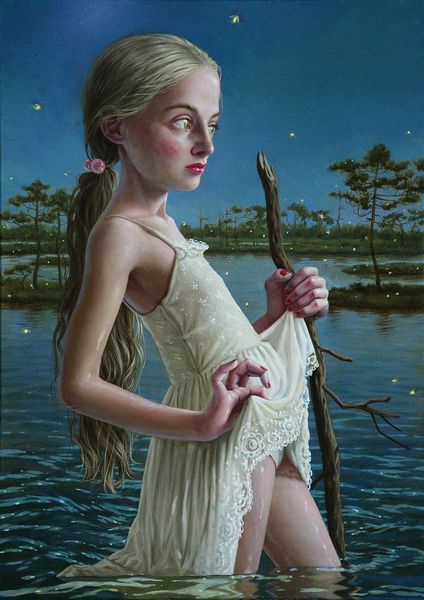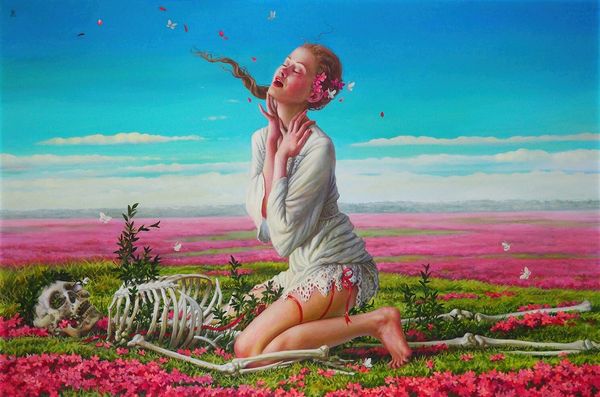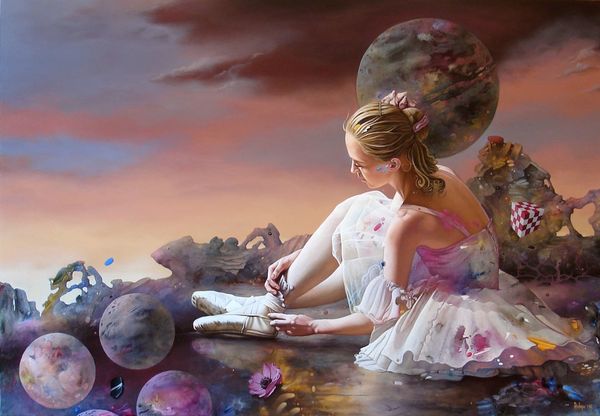
Copyright: Modern Artists: Artvee
Curator: We’re looking at "The Deep Waters," an acrylic on canvas artwork created by Jana Brike in 2018. My initial impression is its arresting beauty—the soft cascade of petals against the strong horizontal line of the fallen tree. It establishes a captivating balance between stillness and motion. Editor: I'm struck by the palpable tension and the loaded symbolism. A nude figure in what seems like a fairytale-esque forest—yet with discarded modern accessories like a handbag and high-heeled shoes. What commentary is Brike offering on the burdened state of modern femininity within these fabricated escapist ideals? Curator: Fabricated is an interesting choice of words. Consider instead the arrangement of light. Brike uses variations in tonality and depth to emphasize areas in the painting. Look at the face: It’s very well lit, immediately grabbing the attention. The forest, even at the background, seems secondary. Editor: True, yet it cannot be separated from the implications of those shadows and textures. This composition recalls tropes present in classical paintings where idealized nudes are displayed in sylvan settings. Brike, however, disrupts the aesthetic. Her inclusion of what might be an abandoned bag and heels hints at themes of forced choices—abandoning material pursuits to connect with a manufactured idea of the natural. It challenges the established norms and invites critical inquiry into our imposed cultural ideals. Curator: But don’t you think this insistence on narrative overlooks the inherent skill with which the artist manipulates visual language? Consider how the texture and color evoke a dreamlike state, playing with Romanticism's visual motifs, while pushing them through the sensibilities of a contemporary artistic vision. The execution transcends purely representational goals; rather, it aims at visual sensation, a heightened experience. Editor: Perhaps, but for whom is this experience intended? Are we meant to simply marvel at the artist’s "skill," or should we also deconstruct the historical implications carried in its aesthetic components? How does Brike speak to us about objectification when positioning her subject, in the context of Romanticized artistic forms, and modern dispossession, at the same time? Curator: I suppose appreciating it doesn’t require choosing just one aspect; but rather recognizing how these multiple components converge within the artist's creation. Editor: A necessary convergence if art is to truly speak to us.
Comments
No comments
Be the first to comment and join the conversation on the ultimate creative platform.
